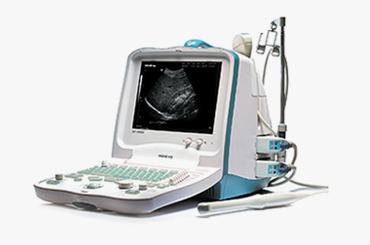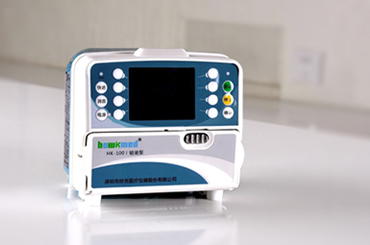Dry Battery Type English Name Complete
APR 10, 2024 Pageview:1883
Dry batteries, also known as primary batteries, represent a cornerstone in the realm of portable power sources. Unlike their rechargeable counterparts, dry batteries are non-rechargeable and rely on chemical reactions to generate electricity. The term "dry" refers to the absence of a free-flowing liquid electrolyte, distinguishing them from wet-cell batteries.
These compact energy sources come in a myriad of shapes and sizes, each tailored to suit specific applications. Whether powering a child's toy, a remote control, or a sophisticated medical device, dry batteries offer a reliable and convenient solution for our power needs. Today we will look into different types of dry batteries and their applications.
Dry Battery Type
Dry batteries encompass a diverse range of energy storage solutions, each designed to fulfill specific requirements across various applications. These batteries operate on the principle of converting chemical energy into electrical energy through controlled chemical reactions. Here, we delve into the intricacies of different dry battery types, understanding their compositions, functionalities, and suitability for diverse usage scenarios.
Alkaline Batteries
Alkaline batteries represent one of the most prevalent and versatile types of dry batteries. Comprising zinc and manganese dioxide electrodes separated by an alkaline electrolyte, these batteries offer a reliable power source for a wide array of devices. They boast a high energy density and exhibit excellent performance in moderate to high-power applications, making them ideal for consumer electronics, such as digital cameras, portable radios, and electronic toys.
Renowned for their exceptional energy density and longevity, lithium batteries stand out as powerhouses in the realm of dry battery technology. These batteries utilize lithium as the anode material paired with various compounds as the cathode. With their lightweight construction and long shelf life, lithium batteries find applications in demanding environments, including medical devices, aerospace equipment, and power tools, where performance and reliability are paramount.
Zinc-Carbon Batteries
Zinc-carbon batteries, also known as Leclanché cells, represent one of the earliest iterations of dry batteries. They consist of a zinc anode, a carbon cathode, and a manganese dioxide electrolyte. While offering a relatively lower energy density compared to alkaline and lithium counterparts, zinc-carbon batteries remain popular for low-power applications due to their cost-effectiveness. Devices such as remote controls, flashlights, and wall clocks often rely on zinc-carbon batteries for their power needs.
Silver Oxide Batteries
Silver oxide batteries utilize silver oxide as the positive electrode, zinc as the negative electrode, and an alkaline electrolyte. These batteries boast a stable voltage output throughout their lifespan, making them ideal for precision instruments such as watches, calculators, and hearing aids. Their long-lasting performance and compact form factor make them indispensable components in various electronic devices requiring reliable power sources.
Zinc-Air Batteries
Zinc-air batteries derive their power from the reaction of zinc with oxygen from the air. These batteries offer a high energy density and long operating life, making them well-suited for applications such as hearing aids. However, they require a constant supply of oxygen from the atmosphere to function efficiently, which limits their applicability in enclosed environments.
Dry Battery Applications
Dry batteries play a pivotal role in powering an extensive array of devices across numerous industries and everyday scenarios. Their versatility, reliability, and portability make them indispensable energy sources for a wide range of applications. Here, we delve into the diverse realms where dry batteries find utility, highlighting their significance in powering everything from household gadgets to critical medical equipment and beyond.
1.Consumer Electronics: One of the most common applications of dry batteries lies in consumer electronics. From remote controls and portable radios to flashlights and digital cameras, these batteries provide a convenient and reliable power source for everyday gadgets. Their compact size and long shelf life make them ideal for powering devices in homes, offices, and on the go, ensuring uninterrupted functionality and convenience for users.
2.Medical Devices: Dry batteries play a crucial role in powering various medical devices, ranging from simple diagnostic tools to life-saving equipment. Devices such as hearing aids, glucometers, thermometers, and blood pressure monitors rely on the consistent voltage output and long-lasting performance of dry batteries to ensure accurate readings and reliable operation. In the realm of healthcare, where precision and reliability are paramount, dry batteries serve as lifelines, empowering medical professionals to deliver quality care to patients.
3.Automotive: While rechargeable batteries dominate the automotive sector, dry batteries still find niche applications in vehicles. Key fobs, remote entry systems, and backup power sources for emergency lighting and alarms often utilize dry batteries to ensure reliable operation. These batteries provide backup power for essential functions, enhancing the safety and convenience of automotive systems.
4.Industrial Equipment: In industrial settings, dry batteries power a myriad of devices, ranging from sensors and transmitters to wireless communication devices. Their reliability, ease of replacement, and long shelf life make them well-suited for use in harsh environments where uninterrupted operation is essential. Whether monitoring equipment in manufacturing plants or facilitating communication in remote locations, dry batteries serve as reliable energy sources, driving efficiency and productivity in industrial operations.
5.Military and Aerospace: Dry batteries are integral components of military and aerospace systems, where reliability and performance are critical. They power communication devices, guidance systems, emergency beacons, and other mission-critical equipment, ensuring operational readiness and safety in demanding environments. From battlefield communications to space exploration, dry batteries provide the power needed to push the boundaries of human endeavor and technological innovation.
6.Recreational Devices: Beyond the realms of industry and healthcare, dry batteries power a variety of recreational devices that enrich our leisure time. Camping lanterns, portable speakers, handheld gaming consoles, and outdoor photography equipment are just a few examples of devices that rely on dry batteries for their power needs. Whether exploring the great outdoors or enjoying indoor entertainment, dry batteries enable us to experience life to the fullest, powering our adventures and enhancing our leisure activities.
In short, dry batteries serve as the silent enablers of modern life, powering the devices and systems that drive progress and enrich our daily experiences. Their versatility, reliability, and portability make them indispensable across a multitude of applications, from the mundane to the extraordinary. As technology continues to evolve, dry batteries will remain at the forefront of innovation, providing the energy solutions needed to fuel our ever-expanding world.
Conclusion
Dry batteries play a vital role in powering a wide array of devices across various industries and everyday applications. With their versatility, reliability, and convenience, they continue to be an essential energy source in our increasingly connected world. As technology advances, we can expect further innovations in dry battery technology, paving the way for more efficient and sustainable power solutions.
- Prev Article: Lead Battery Type English Name Complete
- Next Article: How to achieve charge and discharge management of battery BMS?
Leave Message
Hottest Categories
-
Hottest Industry News
-
Latest Industry News










